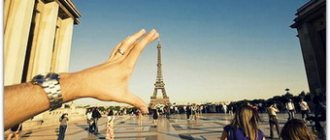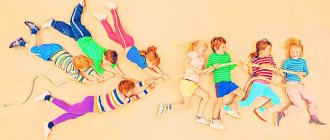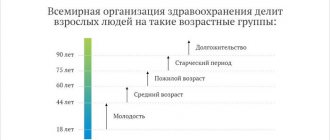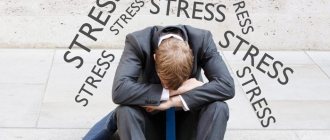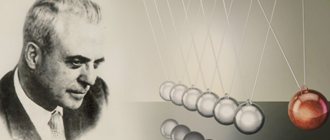What distinctive features does a person have? This question interests many. After all, people are not animals at all. They are somehow different. Humans have a variety of skills and abilities, as well as traits that primates do not and will not have. You need to know about them. What points should you pay attention to? What characteristics do people have? All this is not as difficult to understand as it seems. It is enough to simply compare humans with ordinary animals. You will be able to see the differences immediately.
Speech
The first trait is intelligible speech. That is, a person knows how to talk. And with words, and not just sounds. This is due to the structure of the larynx. In primates it is located higher in the throat. This makes it impossible to talk.
Yes, animals also communicate with each other. And they even try with people. For example, through meowing - this is what cats do. Nevertheless, this is still not speech, although such sounds have a communicative function. Only a person knows how to speak meaningfully, clearly, in separate words and sentences. What other distinctive features are there?
Upright walking
The next distinguishing factor that occurs is upright posture. A person walks upright and straight. Primates and animals cannot do this. Usually they still rely on their forelimbs or do not hold their body quite straight.
Walking on two legs is typical primarily for humans. In the animal world, there are also some species that walk on two legs. But, as already mentioned, the body is not completely straightened. Only man is capable of walking perpendicular to the earth.
Wool
A person has distinctive features in terms of hair. Even with the naked eye you can see that many representatives of the animal world are covered with fur or feathers/scales. This was designed by nature for protection from enemies, cold and for camouflage.
For people, things are a little different. A person does not need wool to protect himself from the cold, so the hairline is preserved only in some places. For example, in the armpits and on the head. In men, hair appears on the face and chest, but the entire body is not completely covered with a continuous layer of fur or fluff.
A person has distinctive characteristics. But which ones exactly? What else can distinguish it on Earth?
External features of a person that characterize his type
Men with wide hips (effeminate) – infertility.
Women with narrow hips and broad shoulders (masculine) are infertile.
Women with small and thin legs are voluptuous.
Large noses in women are masculine tendencies.
The nose is short and sunken in women - low instincts.
A nose with a hump (Mars type) means energy; too big a hump is crazy.
Almost all consumptives have long and white teeth. Very wide and strong teeth – long life.
The shape of the upper lip expresses the sublime world; the shape of the lower lip - the world is low, when it protrudes forward, it means greed and voluptuousness, but when it rises upward, as if wanting to reach the upper lip (wanting to thereby ennoble itself), then it expresses only contempt and stupidity..
Lips that are excessively thin and compressed mean people are cold and soulless.
The lips are full and elegant - poets.
Dry-lined lips – stubbornness.
The saggy ones are phlegmatic.
Thick and large lips, protruding and moist, are characteristic of people who love to live in all respects. Unbridled pleasure.
A long upper lip, swollen in the middle - a rough bestial figure, and if there is a wart on this lip, then - excessive bestial instincts.
People who have a short and raised upper lip, a short raised nose and hold their head high, slightly to the side, are very proud and treat others with contempt.
The chin is prominent, wide (Mars type) – energy.
A dry, bony chin in young people means that they do not know the hobbies of youth, since such people are greedy and have no heart.
Thin cheeks in young people, in general, everything that resembles old people, such as dry and wrinkled skin, means a baseness of soul.
A person's hand, covered with hair on top and calloused inside, shows bestial tendencies in a person.
Long hips are the nobility of the soul.
Hips covered with hair - debauchery.
Crooked legs and knees, as well as a crooked spine, give rise to people who are unfriendly, ironic, envious, pretenders; in general, all the shortcomings are inherent in people with physical abnormalities.
Fat and heavy knees. The nature is heavy and rough.
Women with big feet. Male character.
A man with small feet. Feminine character, vague without energy.
Smooth polished leather. Coldness and dispassion, selfishness and insensitivity. The hand of the women of the world.
Head tilted forward. Submission to outside suggestions, lack of free will, disposition to hibernation.
Head raised up. Self-confidence, pride and contempt for the opinions of others.
The head is thrown far back. A person lives by his feelings; lust; loves to command.
Head tilted to one side. Exhaustion and lack of intelligence.
Head turned to the side. Denial of existing rules, contradiction.
Weak thin neck in men. Nervousness and weakness.
A woman with a strong and muscular neck. The energy and firmness of a man.
Very short neck. Stupidity.
Thick neck. Heaviness of mind.
An unusually thin neck with a protruding vertebral bone is a sign of poverty of mind.
An unusually thin neck with a protruding vertebral bone is a sign of poverty of mind.
The neck is stretched forward. Cunning, lies and bestiality.
Neck extended to the side. Promiscuity and stupidity.
Clumsy straight neck. Limited intelligence and stubbornness, often ignorance and shamelessness.
The neck is thrown far back. Arrogance.
Average rating 1 / 5. Total votes 3
Brain
The brain is the next point to consider when considering the differences between humans and animals. And this is quite obvious. It's no secret that a typical representative of Homo sapiens has a fairly large, developed brain. But this is not the only trait that people have.
The point is that a person’s brain is designed and developed in such a way that it can be used to the maximum. This allows creativity and reasoning. Yes, in animals and primates the brain is also designed in such a way as to ensure the safety of life. Only his level of development is much lower. What other distinctive features of humans can be distinguished from the inhabitants of the animal world? There are quite a few items that have not yet been listed.
The concept and meaning of personal identification based on appearance
Identification of a person by appearance is the establishment of the identity or difference of a particular person by describing the signs of appearance according to a certain system and using special terminology.
Identification of a person by appearance is possible due to the fact that each person has only his own individual set of characteristics that distinguish him from other people and even close relatives. Individuality is manifested in the uniqueness of shapes, sizes and features of the external parts of the body, which in turn also have a set of characteristics: size, placement, configuration, etc. For example, an element of the face such as the forehead has the following characteristics: size, contour, position relative to the vertical. The combination of elements with characteristic features, although it has certain boundaries, is nevertheless practically infinite. All this creates a unique set of characteristics that make it possible to distinguish each person by his appearance from the mass of others and to identify him. The identification value of individual characteristics depends on how often they occur in different people. The less common a feature is, the greater its identification value.
In addition to individuality, signs of appearance are relatively stable. This is due to the fact that during life some signs undergo age-related and pathological changes. These changes may be more or less significant, but in a certain period of time the totality of signs of a person’s appearance is unique and individual. The most stable characteristics are those determined by the osteochondral structure, for example, the shape of the head, the profile line. Significant changes in appearance can occur due to injury or illness, but they are quite rare in investigative practice. A person’s appearance quickly changes when facial hair changes, which must be taken into account when identifying and searching for a criminal.
Another property of a person’s external signs is reflexivity. This property of appearance is imprinted in various images and people’s memory. Objective and subjective reflections are distinguished. Objective ones include photographs, films, videos, x-rays, bone remains (mainly the skull), death masks and casts. Subjective ones are formed on the basis of mental images in people's minds. This description will include a person (“verbal portrait”), subjective portraits, plastic and graphic reconstructions of the face based on the skull.
Things
Clothes and shoes are two more features that make a person stand out. It is with their help that people provide themselves with warmth and comfort. This is a replacement for wool. No one else in the living world wears clothes or shoes. They became distinctive features only for humans.
True, at the moment they even create special clothes for animals. Fortunately, such innovations take place only in relation to pets - dogs and cats mainly. But animals can do without clothes. But people don’t. Therefore, you should not neglect this point. A person makes his own shoes and things, and then wears them.
Blush
A characteristic distinguishing feature of humans from animals was the presence of blush. It's hard to believe, but only in humans does it occur. Animals, birds and other living creatures cannot blush. This is a feature that only humans have.
However, the appearance of blush still remains a mystery to the world. It is not clear why people blush when they are embarrassed, for example. Scientists explain this phenomenon by a sharp rush of blood.
Childhood
The distinctive characteristics of people are varied. It is worth paying attention to the fact that the childhood period in humans lasts longer than in primates or any other animals. Human babies depend on their parents for a long time and are not able to provide for themselves.
But in animals everything is somewhat different. Childhood for most of them lasts no more than a year. Moreover, during this period, parents usually manage to teach their cubs to survive and live. Learn the basics - childhood is over. A person is considered a child under 18 years of age. This is how long this period lasts. True, you can provide for yourself from about 13-14 years of age.
If we talk about babies, then human cubs, compared to baby animals, are dependent on their parents for a longer period of time. It takes approximately 2 years for a person to learn to walk and communicate with his own kind. For animals this takes no more than a few months. So it's worth paying attention to this.
The concept of external signs of a person, their classification and forensic significance
Forensic habitoscopy is a branch of forensic technology, including a system of scientific principles and means and methods based on them for collecting and using data on a person’s external appearance for the purpose of solving, investigating and preventing a crime (the doctrine of external signs of a person).
Forensic habitoscopy studies:
1) forensic concept of appearance:
a) structure and properties of external appearance;
b) a system of elements and signs of external appearance;
c) the main prerequisites for the use of external appearance in the practice of solving crimes;
2) patterns of capturing the external appearance in various displays: the system and characteristics of displays, the possibility of their use in forensic practice;
3) general patterns of collecting, studying and using data about a person’s external appearance;
4) methodology of forensic portrait examination.
External signs of a person are various properties and features that characterize facial features and body structure, as well as features of some physiological manifestations (functions) of the body.
Kinds:
1) own characteristics;
2) accompanying signs.
Personal appearance characteristics include:
-general physical data (height, weight);
-anatomical features of the structure of the human body - the general appearance of the figure is determined by the physique (stocky, athletic, etc.), the shape of individual parts of the body - head, face, neck, shoulders, chest, back, arms, legs;
-anthropological characteristics (race, nationality);
-functional (dynamic) signs - posture, gait, voice, gestures, facial expressions, etc.
A special place is given to special signs - signs that are not associated with the usual natural development of a person, which are the result of abnormal deviations, both congenital and acquired (including by the will of a person). They have a high identification value because they are rare. In turn, special signs can also be anatomical - hump, birthmarks, etc., functional - lameness, speech defects, etc.
Accompanying signs of appearance include signs that reflect the features of appearance - makeup, hairstyle, clothes, shoes, hats, etc. Recording accompanying signs is especially important when unidentified corpses are discovered.
In general, there are many different criteria for classifying appearance characteristics. So, depending on the constancy of existence, signs are divided into:
- permanent (characteristic of a person throughout his life);
-temporary (characteristic of a certain period of time - hair length, skin rash).
Depending on the origin, the signs are divided into:
natural (established by nature);
artificial (the result of changes in appearance, for example plastic surgery, hair extensions).
Rules for describing a person’s appearance using the verbal portrait system
A verbal portrait is an ordered, systematized description of a person’s appearance using unified terminology used in investigative and operational search practice.
Basic rules for describing appearance using the verbal portrait method:
— the description is carried out sequentially from top to bottom, from general to specific;
— the description is carried out with maximum completeness and comprehensiveness;
- when describing, unified terminology is used (for example, elements of appearance in shape are described using the names of geometric shapes);
— a person’s appearance (and its individual elements) are characterized by various criteria, such as shape, size, position, quantity, color, etc.;
— the human head, as the most noticeable and memorable element, is described in full face and profile.
The order of description of features:
1) General physical characteristics : gender, age (indicated according to documents, “by sight” or according to a medical examination), race, ethno-anthropological type (ethnicity, nationality, etc.).
2) Anatomical signs: 1) height (in operational investigative practice, growth is described according to a three-dimensional gradation: low (up to 160 cm), medium (160-174 cm) and high (more than 174 cm). In women, these indicators are reduced by 7- 10 cm. In investigative practice, a 5- or even 7-member growth gradation is used, adding “very low”, “very high”, “above average” and “below average”); 2) physique (according to the degree of proportionality and development of the muscular system - athletic, stocky, average and weak (asthenic); according to the degree of fatness - very thin, thin, normal nutrition, plump and very plump); 3) the head as a whole (shape, size in relation to the overall build); 4) parietal part (shape); 5) back of the head (along the contour and in relation to the vertical); 6) hair on the head and face (thickness, color, length, shape of the growth line, hairstyle, type of haircut, presence, degree of prevalence and localization of gray hair, baldness, signs of cosmetic hair coloring and color of dyed hair, hair condition, presence, shape and length of sideburns, beard and mustache); 7) face (shape, width, skin color, contour in profile); forehead (width, height, shape in profile, degree of expression of the frontal tubercles, brow ridges, etc.); 9) eyebrows (thickness, height, color, shape, length, distance between eyebrows, position relative to the eye sockets and relative to the horizontal); 10) eyes (size, color, shape, relative position, position of eyeballs in the sockets, features); 11) eyelashes (thickness, contour, length); 12) nose (height and width, shape, length of the bridge of the nose, depth of the bridge of the nose, protrusion of the nose, contour of the back in profile, width and shape of the back in front, position of the base of the nose in profile, position, size and shape of the tip of the nose, shape of the wings of the nose, contour of the nostrils); 13) mouth (size, shape, contour of the line where the lips close, position of the corners of the mouth, features); 14) lips (thickness, protrusion, contour, color); 15) teeth (size, shape, color, distance between teeth, presence of dentures and color of denture material, absence or damage of individual teeth, bite, etc.); 16) chin (height, width in frontal view, contour in profile and in frontal view, tilt in profile); 17) auricle (size, position relative to the vertical, shape, degree of fit, shape and size of the lobe, degree of fusion of the lobe with the cheek, structural features of the antitragus, helix and antihelix); 18) wrinkles (presence, localization, quantity, severity, shape and direction); 19) neck (height, thickness, protrusion of Adam’s apple); 20) shoulders (width, slope relative to the horizontal); 21) chest (width, protrusion, development of pectoral muscles); 22) back (contour, width, protrusion of shoulder blades); 23) hands (length, thickness, length and width of the hands, presence of hair on the back of the hands, length and width of the fingers, length and width of the nails, shape of the nails); 24) legs (length and thickness, shape, foot size, etc.).
2) physique (according to the degree of proportionality and development of the muscular system - athletic, stocky, average and weak (asthenic); according to the degree of fatness - very thin, thin, normal nutrition, plump and very plump); 3) the head as a whole (shape, size in relation to the overall build); 4) parietal part (shape); 5) back of the head (along the contour and in relation to the vertical); 6) hair on the head and face (thickness, color, length, shape of the growth line, hairstyle, type of haircut, presence, degree of prevalence and localization of gray hair, baldness, signs of cosmetic hair coloring and color of dyed hair, hair condition, presence, shape and length of sideburns, beard and mustache); 7) face (shape, width, skin color, contour in profile); forehead (width, height, shape in profile, degree of expression of the frontal tubercles, brow ridges, etc.); 9) eyebrows (thickness, height, color, shape, length, distance between eyebrows, position relative to the eye sockets and relative to the horizontal); 10) eyes (size, color, shape, relative position, position of eyeballs in the sockets, features); 11) eyelashes (thickness, contour, length); 12) nose (height and width, shape, length of the bridge of the nose, depth of the bridge of the nose, protrusion of the nose, contour of the back in profile, width and shape of the back in front, position of the base of the nose in profile, position, size and shape of the tip of the nose, shape of the wings of the nose, contour of the nostrils); 13) mouth (size, shape, contour of the line where the lips close, position of the corners of the mouth, features); 14) lips (thickness, protrusion, contour, color); 15) teeth (size, shape, color, distance between teeth, presence of dentures and color of denture material, absence or damage of individual teeth, bite, etc.); 16) chin (height, width in frontal view, contour in profile and in frontal view, tilt in profile); 17) auricle (size, position relative to the vertical, shape, degree of fit, shape and size of the lobe, degree of fusion of the lobe with the cheek, structural features of the antitragus, helix and antihelix); 18) wrinkles (presence, localization, quantity, severity, shape and direction); 19) neck (height, thickness, protrusion of Adam’s apple); 20) shoulders (width, slope relative to the horizontal); 21) chest (width, protrusion, development of pectoral muscles); 22) back (contour, width, protrusion of shoulder blades); 23) hands (length, thickness, length and width of the hands, presence of hair on the back of the hands, length and width of the fingers, length and width of the nails, shape of the nails); 24) legs (length and thickness, shape, foot size, etc.).
3) Functional signs: 1) posture (according to the position of the body: tense, taut, loose and loose; in relation to the vertical: straight, stooped or hunched); 2) the usual position of the head (deviations from the vertical relative to the body); 3) the usual position of the hands (hands in the pockets, behind the lapels of the jacket, along the body, behind the back, on the hips, crossed on the chest, etc.); 4) gait (size and speed of steps, placement of legs when walking, nature and type of movement, foot placement); 5) gesticulation - a complex of movements of the hands, and sometimes the head, accompanying speech (presence, expressiveness, nature of gestures, habitual movements during conversation); 6) facial expressions (expressiveness, emotional states); 7) articulation - the position of the lips when pronouncing words (degree of expression); speech (language, pace, character, presence of an accent or local dialect, features of phrase construction); 9) voice (purity, timbre, volume, strength); 10) behavior (stable inclinations and habits).
2) the usual position of the head (deviations from the vertical relative to the body); 3) the usual position of the hands (hands in the pockets, behind the lapels of the jacket, along the body, behind the back, on the hips, crossed on the chest, etc.); 4) gait (size and speed of steps, placement of legs when walking, nature and type of movement, foot placement); 5) gesticulation - a complex of movements of the hands, and sometimes the head, accompanying speech (presence, expressiveness, nature of gestures, habitual movements during conversation); 6) facial expressions (expressiveness, emotional states); 7) articulation - the position of the lips when pronouncing words (degree of expression); speech (language, pace, character, presence of an accent or local dialect, features of phrase construction); 9) voice (purity, timbre, volume, strength); 10) behavior (stable inclinations and habits).
4) Special signs and striking features are described in detail by location, character, expression, size, shape and color; tattoos are described in detail by the content of the drawings and inscriptions.
Associated features (described by name, type, color, style, material, purpose, design, size, degree of wear): headdress, clothing, shoes, jewelry, wearable items, etc.
Description of a person using the verbal portrait method is used: in search actions and activities (comparing the appearance of a person with an existing verbal portrait, comparing a photo of a person or a subjective portrait with a verbal portrait or comparing two verbal portraits from different scenes), searching for missing persons, comparison the appearance of an unidentified corpse or a person who, for some reason, cannot provide information about himself, with a verbal portrait of missing persons.
Reproduction
The distinctive features of a person from an animal consist of a whole list of factors. What can you pay attention to after all of the above? People have a lot of things that can distinguish them from the inhabitants of the animal world.
For example, you can take into account reproduction. The period of gestation of human cubs has significant characteristics, as does puberty. But this is not the most important thing. It's no secret that animals reproduce until they lose reproductive function. This helps to continue the race. In nature, no one just stops reproducing; this desire to procreate is instinctive.
But for people everything is a little different. The point is that a person is able to continue leading his usual lifestyle, even if he does not feel the desire to reproduce. That is, this process is selective in nature. There is no instinct that calls for obligatory reproduction. People are generally able to completely refuse to have children, and this is done consciously, or to postpone childbearing “until better times.” In animals, as already mentioned, this feature is determined by instincts, so there can be no “delays”.
A person's character by the eyes
Black eyes
People with black eyes are potential leaders. They cannot imagine their life without a goal and make every effort to achieve it. Black-eyed men and women are very temperamental, passionate lovers. Due to natural magnetism and great energy, such people always find themselves in the center of attention. However, the coin called “activity” also has a downside - dark-eyed people, unfortunately, often become obsessed with some idea.
Brown eyes
In addition to emotionality and temperament, people with brown eyes, more than anyone else, are characterized by a quick temper. It’s extremely easy to piss them off – a minor reason is enough for this. However, they calm down just as quickly, continuing to communicate as if nothing had happened. The same applies to the love of “brown-eyed” people. The feelings that these people experience are usually very deep and vivid, but short-lived. In order for emotions to last as long as possible, a brown-eyed person must definitely feel the return.
Green eyes
This eye color is one of the most interesting. The fact is that green-eyed women and men have completely different characters. Ladies with this eye color are usually bold and decisive. In addition, green-eyed people have been credited with the ability to perform divination since ancient times.
Men, on the contrary, are very soft and pliable. They will make caring and faithful husbands. But the careers of green-eyed men do not go very well, since they are completely devoid of healthy stubbornness. The character of a person with green eyes means an owner and a jealous person, but very hardworking, who always strives to achieve their goals.
Blue eyes
People with blue eyes are very emotional. They can be considered constant fighters for the truth, which they will prove even to their own detriment. In general, blue-eyed people are completely devoted to anything - it’s very good to be friends with them, but you shouldn’t end up on the list of enemies.
Blue and gray eyes
Blue-eyed people are constantly searching for themselves, so they can change their occupation quite often, and they can move mountains for the sake of a loved one. Gray-eyed representatives of the stronger sex look for benefits in everything, close relationships with a woman can be no exception; these are pragmatic partners, lucky.
Brows
Owners of wide and thick eyebrows are usually generous; such a partner will not skimp on gifts. If the eyebrows meet on the bridge of the nose, then this is a man who really appreciates and loves his mother. Therefore, for a long and harmonious relationship with him, you will simply need to find a common language with his parent. Among men with fused eyebrows there are quite a lot of henpecked men.
If a man’s eyebrows are too thick, and they literally hang over his eyes, this means that you are looking at an adventurer who is used to getting what he wants, and he is unlikely to take your interests into account. If the eyebrows are narrow and not thick, their owner has a soft character, he is modest and may even be complex. You shouldn’t expect decisive action from such a man.
Work
A characteristic distinguishing feature of a person is work. Only people are capable of creating consciously. Society develops a culture that includes material values created with its own hands. Not a single animal in the world is capable of working and inventing. A person has everything for this: a brain, special thinking, and hands that are ideal for using a variety of tools. A completely understandable phenomenon. Animals simply have a body structure unsuitable for work.
People also have abstract thinking. In other words, you can imagine without any problems what this or that object looks like, which does not exist in nature. Animals are not capable of this. Plus, a person strives for cultural development. He is able to create, create a variety of cultural values. As they say, work distinguishes man from animal. And indeed it is.
Character
Each person has distinctive character traits. But this point applies even to animals. Everyone has character. It just manifests itself differently in people and animals.
People are more perfect in this regard. They demonstrate their emotions and experiences more richly, and know how to hide certain qualities. Their characters can be called more detailed than those of animals and primates.
Every living creature reacts in some way to certain stimuli. This is precisely the manifestation of character. It is established at birth and cannot be corrected in any way. Only people know how to restrain themselves in some cases. But animals are not used to this. A person knows how to control himself and understands where he can show character and where he should hold back. As you can see, people and animals are somewhat similar. But they have a lot of differences.
How to determine character by appearance
Let's continue to describe the person by appearance and character. To qualitatively and accurately determine a person’s character, you need to know the following signs:
- Soft hair is a sign of timidity and an easy-going character. Such people are tactful and are not capable of offending others. Always protect the weaker. They attract others with their intelligence and courtesy. They are able to understand their neighbor and enter into his position.
- Coarse hair is a sign of strength. The same pattern applies to animals: a camel, a hare, a lamb has soft wool; The lion, boar, and tiger have hard hair. The same can be said about birds.
- A hairy chest and belly are a sign of fickleness and rash decisions. A sign of increased sexuality. Such people are amorous and often change sexual partners. They have strong potency until old age. Very sociable, easy to communicate.
- A wide chest, covered with thick, coarse hair, and quick turns of the head are signs of a hot temper and an unstable nervous system. Such a person is stubborn and persistent, and it is difficult to get along in a team.
- To determine a person's character by appearance, listen to him. One who speaks in a weak voice is timid and indecisive. A firm voice indicates self-confidence and fortitude. A voice that is shrill to the point of screeching indicates that a person is unbalanced. Such people are susceptible to nervous breakdowns, depression, and frequent ailments of the vocal cords.
- Intonation when determining character. Anyone who speaks, gradually lowering his voice, is always dissatisfied with something, saddened. He is unusually hardworking, but does not achieve universal recognition and considers himself a failure. He has a well-developed imagination; diplomats and orators have this intonation.
- Whiteness of skin. Such people are vulnerable and weak in spirit. Men cede leadership in the family to their wives. Women are flexible and unpretentious. These people cannot do anything bad in their right mind. But they are often subject to depression and mental disorders. Men do not differ in temperament and are somewhat indifferent to women. Women love flirting and attention from men, but they don’t go further than that.
- How can you tell a person's character by their facial appearance? An emaciated face occurs in people prone to sadness (if it is not genetic inheritance). They are very sociable and quickly get along with people. Laconic, excellent listeners. Tactful and correct. They are not very lucky in their personal life. If an emaciated face is complemented by curved eyebrows, sluggish movements are signs of constant mental discord and an eternally depressed mood.
- A fleshy nape is a sign of great sexuality. Such a man cannot miss a single woman (especially the “December” one), he will definitely give a compliment and try to please her. But if the fleshy back of the head is accompanied by wide feet, raised shoulders, a round belly and a round forehead, and greenish eyes, then such a person is more indifferent to women, especially the “summer” one, thinks more about material well-being, loves family comfort, and does not burden himself unnecessary difficulties associated with love affairs.
Interesting observations from those close to the ruling dynasty of the Romanov era:
- “If a person who is too young or just a child is placed on the throne, and he is also kind in character, he will not live long. Under him, those close to his family will rule. During his reign, interesting and unusual things happened, many innovations.
- If a person is placed on the throne in the prime of his life, but his character is angry, stingy and treacherous, his power will not last.
- If a person is elevated to ruler after his fortieth birthday, and his character is good-natured, intelligent and reasonable, such a ruler will be on the throne for as many years as he was when he ascended the throne.”

